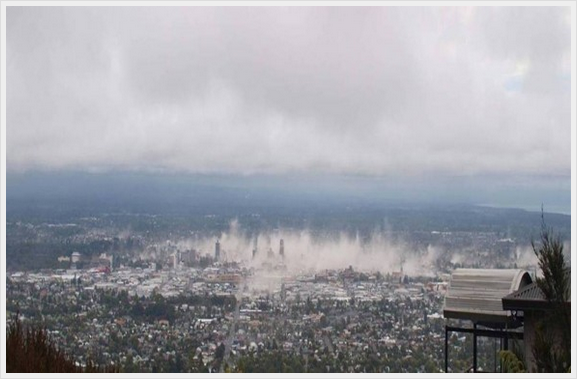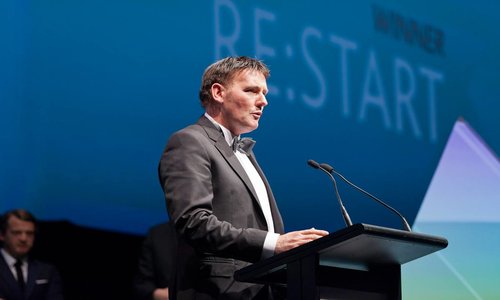
Photo: Recovering-from-disaster-Christchurch
Recovering from disaster: the Christchurch transitional programme
09 May 2015
by Richard Forster
A series of earthquakes and aftershocks that hit Christchurch, New Zealand in 2010 and 2011, caused significant loss of life and huge structural damage to the city centre. Nick Michell discovers how extensive citizen engagement has helped rebuild the city
It began as a normal working day for the people of Christchurch but 22 February 2011 turned out to be one that they will never forget.
“Almost every aspect of our worlds changed that day,” says Maureen Taane, who had been working in the city centre when the earthquake struck. “My colleague and I took shelter under our counter, and I knew even at that moment that the ramifications were huge, such was the severity of the vertical movement we were experiencing.”
The earthquake, measuring 6.3 on the Richter scale, claimed 185 lives, with hundreds more injured, and almost completely destroyed the Christchurch central business district (CBD). Over 10,000 damaged homes would later require demolition, while 100,000 more needed repairs, in an event that decimated large areas of New Zealand’s second-largest city, and left its citizens in a state of shock.
“Getting out of our building and into the city streets to see what was happening outside was an unforgettable experience,” continues Taane, who now runs a new business called HAPA in the Re:START container mall. “It took me four hours to get home, and as we had no phone coverage I had no idea if my immediate family was okay until I got home to find them there. The initial personal effect was pretty basic; find food, water, shelter, locate our loved ones, and check on our neighbours. The house was a terrible mess so we spent most of that first evening sitting in the garden under blankets with a quiet whiskey, feeling grateful for our lives. The aftershocks rolled through relentlessly, every few minutes, which made sleep nearly impossible for some days.”

The damaging effects of the earthquake were huge for a city that had been gearing up to welcome thousands of visitors for the seven games it was due to host during the 2011 Rugby World Cup, just six months later.
In the aftermath of all the destruction and with a city in shock, Christchurch City Council immediately set about devising a comprehensive rebuilding plan. The recovery process provided the council with an opportunity to rebuild the social fabric as well as enhance resilience. In a decision that proved to be hugely successful and beneficial, an extensive engagement with the citizens of Christchurch was launched.
“A lesson learnt from similar disasters was that a solely top down recovery and rebuilding response driven by central and/or local government would inevitably meet with resistance from the affected community,” says Paul Lonsdale, Councillor for Christchurch City Council, Hagley Ferrymead Ward. “The people who know their community best and its ability to contribute to recovery and rebuilding, are those who live there. But nobody has all the answers, so there needs to be a careful mix of the top-down and bottom-up approach. The way to achieve this is providing people with accurate information, a range of possible solutions and their likely cost, ask them to suggest anything more and then ask what they think should be done.”
This is the approach the city council has taken, with a large emphasis on two- way communication, ensuring people feel they are being listened to and are a vital part of the rebuilding process.
To achieve this the city launched the ‘Share an Idea’ community engagement process, in which citizens submitted over 106,000 ideas for the Christchurch rebuild. From the thousands of responses received, the community’s vision of a liveable, vibrant and prosperous city began to take shape and the public feedback formed the basis of the Christchurch Central Recovery Plan, which included a Transitional City programme, which comprised support for recovery in three key areas: healing and wellbeing, sense of place and business.
“Put simply, ‘Share an Idea’ was a way for the public to tell us their ideas about how the central city should be redeveloped to be a great place again,” adds Lonsdale. “We organised the initiative just three months after the February earthquake, kicking off with a Community Expo in May 2011. The citizens’ ideas were collated and brought together to help inform the draft Central City Plan. The ideas have certainly been taken on board and the ‘Share an Idea’ method is now the gold standard for when the city embarks on a major project, such as the new central library.”
Community
The transitional programme contains elements for the long-term recovery of the city, such as testing new ideas, enhancing community resilience and creating a new identity for the city. As a result, hundreds of community activities have been organised and vacant spaces in the city have been utilised with creative projects.
While the private sector has contributed significant financial and in-kind support, it is the 10,000 hours of voluntary work provided by the community that has been particularly impressive in the recovery process. Groups of people, of all sizes, spontaneously formed to help the stricken. Farmers came into the city with digging machinery and food, ‘the Farmy Army’, and university students ‘the Student Army’ spent weeks shovelling hundreds of tonnes of muddy liquefaction out of peoples’ front and back gardens.
“We became a community of neighbours on that day, helping each other out with food, water and supplies, digging latrines, helping clear liquefaction from homes and gardens, sorting bedding and furniture,” says Taane. “Almost everyone I know was involved in some aid and relief efforts somewhere in the city. It made us all better humans. The Student Army were an amazing group of young people and changed a whole city’s perception on the ‘youth of today’. Those kids were out there in all conditions making a huge difference in people’s lives all over the city.”

Very early on after the earthquake, the city council recognised the importance of catalyst groups, collections of individuals who initiated and progressed the creative ideas emerging within the community. In Christchurch these were groups such as Greening the Rubble and Gap Filler. The council encouraged these catalyst groups by providing staff to advise and facilitate connections. The city also needed to be flexible and adaptable, and therefore cut down the red tape associated with its processes, and so planning rules were relaxed allowing temporary activity to occur.
Business recovery
With around 1,200 commercial buildings destroyed, hundreds of businesses dislodged and over 50,000 workers affected, one of the most urgent issues that Christchurch had to deal with was the reactivation of the city centre to provide a positive space amongst all the devastation. In the aftermath of the earthquake many of the office-based workers could relocate or work from home, but the retail and hospitality sector had a large amount of displaced businesses that couldn’t find suitable alternative premises.
In an attempt to rehouse the affected businesses and breathe new life into the central city, the Re:START container mall was established by the Central City Property and Building Owners, who knew that the wait for new buildings would be too long and that people needed to be encouraged back into the CBD as soon as possible.
Through an interest free loan of NZ$3,368,523 (US$2.5 million) from the Christchurch Earthquake Appeal Trust and NZ$300,000 (US$225,000) sponsorship from ASB Bank New Zealand, the Re:START project was made possible, with shipping containers fitted out as retail premises, accommodating 27 businesses when it opened in October 2011.
“The Re:START project was undertaken as a means of keeping some sort of retail activity going in the heart of the city after the quakes had demolished most retail premises,” explains Philip Richards, Executive Director of Ballantynes, a Christchurch- based department store that suffered significant damage to a number of its buildings and offices during the earthquake. “Ballantynes took two spaces in the Re:START Mall to keep two of its departments going until its leased space was repaired and available in 2013. We traded well in this space, and the ongoing survival of the Re:START concept points to its general financial success. It really has been a vital factor in keeping activity going in the central business district.”
Since opening, Re:START has grown steadily, increasing from 27 businesses to well over 50 today. In addition there are market stalls, street performers and buskers. Re:START has also been the cornerstone for the tourist industry in Christchurch and helped propel Christchurch to number six in Lonely Planet’s ‘Top 10 Cities to Visit’ list for 2013’s Best in Travel publication, while the New York Times rated the city as the world’s second ‘Best Place to Visit’ in 2014.
While containers for all sorts of purposes are commonplace now in Christchurch, the idea was a bit of a wildcard when Re:START was first conceived. Their use meant that retail was established in the CBD several years before it would have otherwise taken place. It happened because the authorities allowed the Re:START Trust to use part of the red zone (no go) area. Its success has demonstrated that retail can be re-established in the CBD, which has had 80 percent of its area demolished.
“Getting the project off the ground quickly was key as we knew from international evidence that if we did not return business to the centre of devastation within a six to nine month period, people’s habits would change and become locked in, making recovery harder and longer,” says Lonsdale. “Re:START became the symbol of city centre recovery and a community project where we worked with community and cultural groups, young street performers and musicians and gave them a place to be seen and heard. It is all about people because buildings are nothing without people activating the streets around them.”

The remarkable recovery efforts of Christchurch were recognised in November last year by being selected as one of the five cities to win the Guangzhou International Award for Urban Innovation. The independent award jury, composed of seven international experts and former mayors, were impressed by the positive community impact of transitional projects in Christchurch.
Paul Lonsdale, representing the mayor, received the award on behalf of Christchurch at the ceremony in Guangzhou, and believes the win was testament to the great work taking place in the city’s post earthquake environment, and the value of working with and involving citizens in the recovery process.
“If you want good outcomes it is critical to engage citizens in the decision making process,” says Lonsdale. “The more you listen and show that their views have been heard, the more communities engage.”






